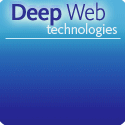Sep
This week the Science.gov Alliance released Science.gov 5.0. The release got a good amount of press from a couple of press releases (from the US Department of Energy and Deep Web Technologies) and from a number of bloggers, including Valerie Allen (Product Manager for Science.gov) on OSTI’s own blog and the SLA Government Information Division blog. When I worked for Deep Web, I supported the application and have enjoyed watching it evolve and grow.
OSTI’s press release sums up Science.gov and its enhancements that make up version 5.0:
Science.gov is a free, integrated single-search gateway to reliable science and technology information from 17 organizations within 13 federal science agencies.
…
Science.gov 5.0 improves upon the previous version, Science.gov 4.0, by offering seven new databases and portals which allow researchers access to over 200 million pages of scientific information.
…
Another key feature of Science.gov 5.0 is a “clustering” tool which helps target searches by grouping results by subtopics or dates. This technology was recently developed through a DOE Small Business Innovation Research (SBIR) Program award.In addition to quadrupling the amount of searchable content and enhancing the search technology, Science.gov 5.0 now provides links to related EurekAlert! Science News and Wikipedia, and provides the capability to easily download research results into personal files or citation software.
What I found to be particularly interesting about this new software release was the focus on providing contextual information along with search results. I’m referring to the Wikipedia and EurekAlert! links on the right sidebar. I recently attended a conference near Toronto, Science in the 21st Century, and there I learned the importance of providing a context within which users can relate to the search results presented. One of the themes of the conference was how scientists communicate science and I realized how important it is to provide more information to researchers and the public than just dense research reports. To facilitate learning, give users information to help them to form a conceptual framework within which they can absorb the details.
This concept of context is what mashups are all about. Mashing up information from a number of sources lets people form associations among different ideas. For federated search, it would be helpful to include biographical information about authors, as well as links to related articles of theirs, and links to related articles from others. I applaud the effort Ms. Allen and others have made to enhance Science.gov and I look forward to seeing what is developed for future releases.
If you enjoyed this post, make sure you subscribe to the RSS feed!
Tags: Deep Web Technologies, federated search, Science.gov, Science21

